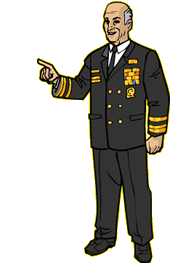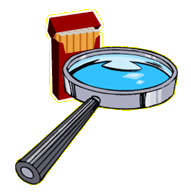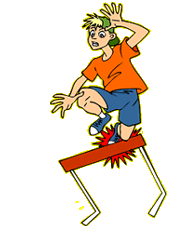QUESTIONS ANSWERED

Why is smoking such a big deal?
Why does the CDC track how many people smoke?
What does CDC do to help tell people about the risks of smoking, or help them quit?
![]() Why is smoking such a big deal?
Why is smoking such a big deal?
![]() Tobacco use (like smoking, dip, or chew) is a major cause of death and disease in this country. In fact, 50 Americans die each hour,1,200 people die each day, and 440,000 die each year of diseases and health problems they develop as a result of smoking, like cancer, strokes, or heart disease.
Tobacco use (like smoking, dip, or chew) is a major cause of death and disease in this country. In fact, 50 Americans die each hour,1,200 people die each day, and 440,000 die each year of diseases and health problems they develop as a result of smoking, like cancer, strokes, or heart disease.
 You can also be affected by the smoke from other people’s cigarettes (and from the smoke the smoker breathes out!). This is called second-hand smoke and it can be just as bad. There are about 4,000 chemicals in cigarette smoke and almost 70 of them cause cancer in humans. Because of this danger to non-smokers, there are now laws that prevent people from smoking in places like restaurants, schools, at work, on airplanes or in public buildings.
You can also be affected by the smoke from other people’s cigarettes (and from the smoke the smoker breathes out!). This is called second-hand smoke and it can be just as bad. There are about 4,000 chemicals in cigarette smoke and almost 70 of them cause cancer in humans. Because of this danger to non-smokers, there are now laws that prevent people from smoking in places like restaurants, schools, at work, on airplanes or in public buildings.
![]() Why does the CDC track how many people smoke?
Why does the CDC track how many people smoke?
![]() Tracking different behaviors (like smoking and physical activity) allows CDC to see which ones are affecting people’s health. For example, until the early 1960’s, most people didn’t think smoking was bad for you. In fact, ads for cigarettes claimed that smoke helped soothe sore throats, and that different doctors preferred different brands!
Tracking different behaviors (like smoking and physical activity) allows CDC to see which ones are affecting people’s health. For example, until the early 1960’s, most people didn’t think smoking was bad for you. In fact, ads for cigarettes claimed that smoke helped soothe sore throats, and that different doctors preferred different brands!
 But, by keeping track of who got sick with things like lung cancer and heart disease, the CDC and other health agencies realized that smoking was a big cause of serious problems – and that led to the first Surgeon General’s report on smoking in 1964, the first official announcement that smoking was dangerous.
But, by keeping track of who got sick with things like lung cancer and heart disease, the CDC and other health agencies realized that smoking was a big cause of serious problems – and that led to the first Surgeon General’s report on smoking in 1964, the first official announcement that smoking was dangerous.
By continuing to track how many people smoke each year, CDC can develop new ways to help people quit (or prevent them from starting) smoking.
Tracking different behaviors and diseases and breaking down those numbers by sex, age, race, location, and more is called epidemiology. One of the steps in the CDC epidemiology process and it includes collecting data, researching and observing certain populations. The populations can get pretty specific, like neighborhoods or communities. Or, CDC can do surveillance on a larger population like a state or region of the country, age, sex, or race. Just depends on the situation.
Don’t know who the Surgeon General is? Well, he’s the top doctor in the United States. He gathers all of the best scientific information out there and uses it to tell Americans (just like you) how to live healthier lives.
One way he does that is through Surgeon General’s Reports. Every so often, the Surgeon General will put all of the latest information on one topic into a report and give it to people so they can learn how to stay healthy. Twenty-eight have been written on tobacco use alone (which tells you how important it is), but reports have also been written about other topics like youth violence and physical activity.

![]() What does CDC do to help tell people about the risks of smoking, or help them quit?
What does CDC do to help tell people about the risks of smoking, or help them quit?
![]() The CDC is dedicated to gathering and communicating information and statistics on anything you want to know about the risks of smoking. Did you know that smoking can make you run slower and for shorter distances? Or, how about the fact that smoking can make it hard for you to breathe? You can learn more about the dangers of tobacco use by visiting http://www.cdc.gov/tobacco/index.htm.
The CDC is dedicated to gathering and communicating information and statistics on anything you want to know about the risks of smoking. Did you know that smoking can make you run slower and for shorter distances? Or, how about the fact that smoking can make it hard for you to breathe? You can learn more about the dangers of tobacco use by visiting http://www.cdc.gov/tobacco/index.htm.
The CDC also relies on people just like you to help others to stay smoke free. They have tons of information about how you can get involved in smoking prevention in your community and school. So, check out these links to find out what you can do.
- Page last reviewed: May 9, 2015
- Page last updated: May 9, 2015
- Content source:



 ShareCompartir
ShareCompartir